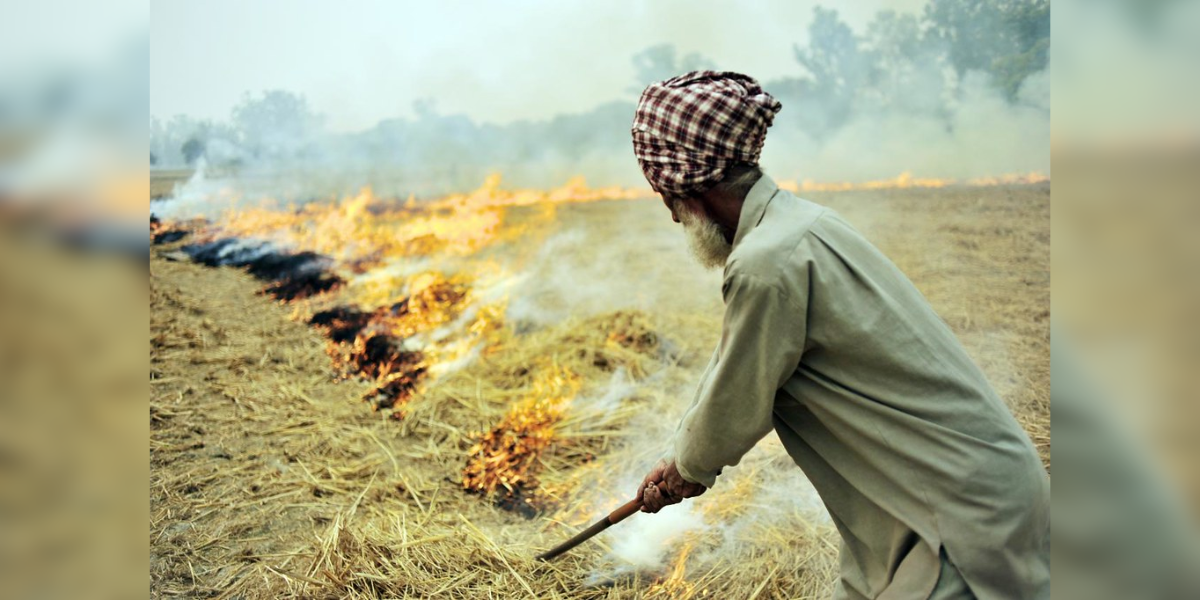As the window for rabi crop is very short, some farmers set their fields on fire to quickly clear off the crop residue in order to sow the next crop.

Punjab saw the highest number of stubble-burning cases on 2 November. (Commons)
As Delhi NCR chokes, with an ever-depleting Air Quality Index (AQI) in the severe category, Punjab has witnessed a record rise in stubble burning this year — it stands at 9,594, adding to the existing crises.
The state reported the highest number of stubble-burning cases on 2 November, with 1,921 cases.
In Tarn Taran, 226 cases have been reported, 200 in Ferozepur, 157 in Mansa, and 127 in Patiala. Earlier, on 31 October, there were 1,389 incidents of stubble burning in Punjab.
Sangrur district is on the top in cases of stubble burning, where 345 cases of stubble burning were reported in a single day. As the window for the rabi crop wheat is very short after the paddy harvest, some farmers set their fields on fire to quickly clear off the crop residue in order to sow the next crop.
On 29 October, Punjab reported 1,068 farm fires, including in Sangrur with a maximum of 181, followed by 155 in Ferozepur, 133 in Tarn Taran, 83 in Patiala, and 66 in Mansa, according to data of Ludhiana-based Punjab Remote Sensing Centre.
The state recorded 49,922 fire events in 2022, 71,304 in 2021, 76,590 in 2020, 55,210 in 2019, and 50,590 in 2018, with many districts including Sangrur, Mansa, Bathinda, and Amritsar witnessing large number of stubble burning incidents.
With about 31 lakh hectares of paddy area, Punjab produces around 180-200 lakh tonnes of paddy straw every year, of which 120 lakh tonnes was being managed through in-situ (mixing crop residue in fields) and around 30 lakh tonnes ex-situ (using stubble as fuel) management methods.
Meanwhile, the Punjab government claims that their persistent efforts have yielded impressive results and the number of fire counts has reduced by almost 53 percent. The state emphasised and focused on long-term, sustainable solutions, including the provision of crop residue management (CRM) machines to farmers at an 80 percent subsidy for farmer groups and a 50 percent subsidy for individual farmers.
“The state has 1.35 lakh CRM machines and concerted efforts are underway to maximise their utilisation. The state has set up a system in place to track the utilisation of these machines and weekly reviews are being conducted by the high-level officials to ensure maximum utilisation of machines. The in-field interventions to utilise the paddy straw have been complemented by the state’s push to set up industries consuming the straw to produce cleaner fuel and this effort aligns with the state government’s policy to create an industry-friendly environment and expand the industrial units in the state,” read an official statement by the Punjab government.
The stubble burning has not only plunged NCR in a pollution crises, but the AQI has dipped in many prominent cities in Punjab — Bathinda (279), Ludhiana (254), Amritsar (218), Patiala (180), Mandi Gobindgarh (262), and Jalandhar (169).

Dec 05, 2023

Dec 04, 2023

Dec 03, 2023

Dec 02, 2023

Dec 01, 2023

Nov 29, 2023